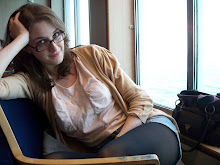
26th October, Michael Howard from the Art History department came to us and told our course about an exhibition that is soon coming to the Museum Of Science and Industry. 14th November sees the arrival of Leonardo Da Vinci, a celebration of his machines, techonolgy and creative mind.
The brief was to create an A4 image of a machine or invention that he never got round to inventing. This could be a model, drawing, or computer animation, something witty, funny or completely serious.
Da Vinci was born in Italy on the 15th April, 1452 and died in France on the 2nd May, 1519. During his lifetime there was great speculation on the theory of the end of the world, according to the Book Of Revelations, which was meant to be happening around 1520/1525.
Da Vinci was curious but troubled. He constantly questioned where is God, the soul, the truth, what is beauty, what is perfection; what is man capable of?
Curiosita - intellectual curiosity
Dimonstrazione - to test experience through practice; willingness to learn and keep an open mind.
Sensazione - engagement of all the senses, the gateway to the intellect.
Sfumato - recognise the essential ambiguity, contradiction and mystery of life.
Arte/Scienza - balance between art, science, logic and imagination.
Corporalita - grace, fitness to purpose, poise and understanding of our corporality. The relationship between body and grace.
Connessione - a recognition and appreciation of all things and phenomena.
Da Vinci believed that man was the centre of the universe, this was the medieval belief of the time, an idea from Classical thinking. The fear of the Apocalypse was echoed in the politics of the time. For Da Vinci, geometry was God.
He wrote with his left hand, backwards, for ease and this was a reflection of Arabic thinking, which states that the Sun is the centre of the universe.
He was interested in light, air, geological and intellectual foundations and aerial perspective. Overall, the density of the atmosphere. Also the subject of meditation. Da Vinci believed that 'observation is the mother of all certainty.'
Freud claimed that in several of Da Vinci's paintings of Christ and Christian imagery, the shapes of birds showed homosexuality in his subconscious.
The most famous painting he ever painted, and probably the most famous painting in the world is the Mona Lisa. It shows two kinds of time; human time and the geological time of the landscape yet this painting has become a symbol of immortality. As many have commented on the painted woman being; 'older than the rocks behind her' and as having 'died many times'.
As well as portraits and religious paintings, Da Vinci was said to have cut up over 30 human bodies in his lifetime. And this shows in his biological drawings as they are all medically correct. He was interested in turning the body into a machine and taking away it's organic quality. Considering the human body he was keen to know why human beings had lost their grace and elegance about their posture and walking. This particular thought of Da Vinci's lead me to create an image of a 'posturing machine' for my A4 'invention that he never got round to making.'











